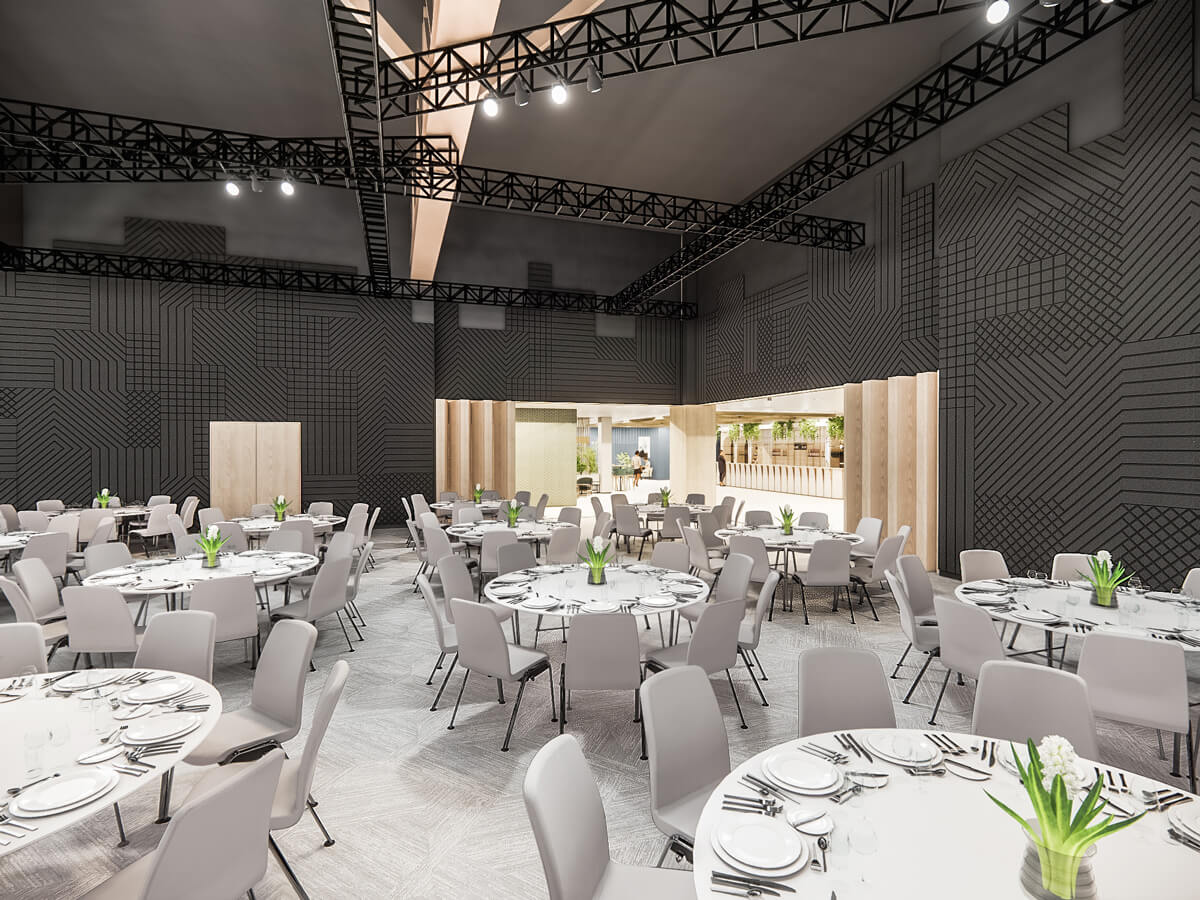A historical civic square built to inspire you.
Le Pole Square respects the past and embraces the future.
The excavation of Le Pole Square has uncovered the largest assemblage of Viking and Medieval finds found on any site since the Wood Quay excavations.
The Souterrain found on the site links back to the 9th or 10th Century and suggests there was activity on this site from this time. The Souterrain is unusual in that not many have been found in the city of Dublin, indicating the existence of an early settlement.
Before the excavation of this site it was thought that the ‘Pool’ only flowed into the grounds of the area which has now become Dublin castle area but it is known now due to the archaeological dig that it would have flowed onto this site.
This answered two mysteries that historians have had:
- Why was the church called St Michael Le Pole? As it overlooked the Pool
- How did the Vikings have up to 200 ships at the Longphort? With the extended Poddle/Pool, this would fit the ships in the area
St Michael Le Pole Church
The church of St. Michael Le Pole was built in 1100AD and closed in 1682 when it was deconsecrated. It became a school in 1706. The round tower depicted in the current stone in the square was standing for 700 years until a heavy storm brought it down in 1706. The Lintel Grave found under the church indicated this could have been a place of worship from as early as 895 AD. The Vikings would surely not have tolerated a Christian church until they converted to Christianity in 930/940 AD, the thoughts are that they might have destroyed the earlier place of worship.
The Church was built on a cliff 9 metres above the Poddle. Churches dedicated to St. Michael the Archangel would be built in high places as he was the patron saint of high places. In a lot of cases they would also be overlooking the sea as he was the Patron Saint of Mariners. This explains some of the slope on Great Ship street, which is much lower than Chancery Lane on the opposite side of the complex.
The most striking examples of churches dedicated to St. Michael on high ground and overlooking the sea can be found at Skellig Michael, St. Michael Mount in Cornwall, Mont St. Michel in Brittany and Monte Garano in Italy. These four churches are part of 7 churches which for a perfect line from Ireland to Israel called the Sword of St. Michael, they reputedly form the blow St. Michael struck against the devil to send him to hell.
The Quarry
On the balance of probability it would seem that the quarrying began in 1200AD. This timeframe makes it seem likely that the stone was used in several ecclesiastical buildings and also Dublin Castle which was erected at the start of the 13th Century.
There is a historical reference which dates from October 1217 that Henry the Third made a grant to Archbishop Henry of two carucates of land in Tymon and £10 per annum in compensation for damages done to his church.
While no specific church is mentioned, it is likely to have been the church of St. Micheal Le Pole and the quarrying damaging the church and disturbing the burials in quarries 1-3. The church was after all only 50 metres from Dublin Castle.
After further investigation of dates for ecclesiastical sites within the area, we have the following sites:
- Christchurch – The Chapel to St Laurence added in the 13th Century and the Extant Nave built inn 1230s
- St. Patrick’s Cathedral – Built between 1191 and 1270, but little remains of that build. Further builds happened between 1225 and 1270 as they added the Lady Chapel and the whole church was rededicated
DMP Station
The Dublin Metropolitan Police station was established in 1843 on a large site occupying part of the centre of the excavated site. As an unarmed police force, they did not participate in the War of Independence but their agents such as Edward Broy did help Michael Collins with intelligence reports. The station closed down in 1929
Little Italy
As the 19th Century progressed, things moved from bad to worse with the rise of tenements with up to 53 tenants recorded in one house. One bright spot was the welcome addition of a large number of Italian families to the area earning the name of Little Italy. They would have came as skilled plasterers, marble workers and wood workers to work in buildings such as churches, but they also brought businesses with them, including ice-cream to Dublin! They were famous for their New Years Eve Party and Dubliners would come from all over on this night to dance and sing with their Italian neighbours. There are still plaques to this day commemorating Little Italy!
The police station and tenements were all torn down in the 1930s and 1940s and replaced by sheds. The fills from the cellars contained much rubbish like old beds and bits of bicycle but also many buttons, bottles, ceramics and other objects dating up to the 1920s. There was also a surprising number of coins dating from a wide range period from the late Georgian to Late Victorian eras which would have fallen through floorboards and then into the cellars when the houses were demolished.
Meet in the heart of Dublin
Let our team of dedicated events specialists help plan your next event.

